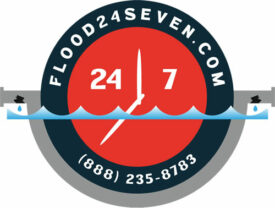Understanding the dangers of mold
Mold can lead to health problems such as coughing, wheezing, and throat irritation. It can also exacerbate asthma symptoms and cause allergic reactions. According to the Environmental Protection Agency, mold exposure can even lead to more serious health issues in some cases, such as lung infections. It’s important to be vigilant and recognize the signs of mold after water damage to protect yourself and your family from these potential dangers.

The impact of water damage on mold growth
Water damage can lead to mold growth in as little as 24 to 48 hours. Mold thrives in damp and humid conditions, so any areas affected by water damage should be dried as soon as possible. Even small amounts of water can create an environment where mold can grow, so it’s important to thoroughly dry affected areas to prevent mold growth. If water damage is not dealt with promptly, it can lead to extensive mold infestation, which can pose health risks and be costly to remediate.
Signs of mold after water damage
Mold can start growing in damp or wet areas within 24 to 48 hours. Common signs of mold after water damage include a musty odor, visible mold growth on walls or ceilings, water stains, discoloration, and peeling paint or wallpaper. Other signs include allergic reactions, such as sneezing, coughing, or itchy eyes, or exacerbation of respiratory conditions such as asthma. If you notice any of these signs after a water damage incident, it’s important to address the issue promptly to prevent mold from spreading and causing further damage.
Health risks associated with mold exposure
Mold exposure can pose serious health risks, including respiratory issues, allergic reactions, and exacerbation of asthma symptoms. Prolonged exposure to certain types of mold can even lead to more severe health problems. It’s important to be vigilant for any signs of mold growth in your home, such as musty odors, visible mold, or water damage. If you suspect mold, it’s crucial to address the issue promptly to minimize health risks for you and your family.
Testing for mold presence
Mold testing after water damage is crucial to ensure your home is safe from harmful mold. You can conduct a surface and air sampling test to detect the presence of mold. A surface sampling test involves swabbing or tape lifting to collect mold from a specific area, while an air sampling test measures the concentration of mold spores in the air. Both tests can help determine the type of mold present and the extent of the contamination, guiding you in taking appropriate action to address the issue.
Hiring a professional mold remediation service
Hiring a professional mold remediation service is crucial after water damage. The Environmental Protection Agency recommends seeking experts for mold remediation, as they are trained to safely and effectively eliminate mold. These professionals have the necessary equipment and knowledge to handle mold issues, ensuring your home is safe and free from mold spores.
DIY mold removal techniques
Some sources recommend against do it yourself mold removal if the affected area is larger than 10 square feet, or if toxic black mold is present. Mold can be harmful to your health, and improper removal can spread the spores and make the situation worse. If you still want to proceed, use protective gear like gloves, goggles, and a mask to prevent exposure. Use a mixture of detergent and water to scrub the mold off hard surfaces, and then dry the area thoroughly. If the mold persists, consider seeking professional help to safely remove it.
Preventing mold after water damage
After water damage, it’s crucial to act fast to prevent mold growth. Here are some steps you can take to prevent mold after water damage:
- Dry the affected area as soon as possible to prevent mold from thriving in moist conditions.
- Remove any wet materials, such as carpets, furniture, and upholstery, as they can become breeding grounds for mold.
- Use dehumidifiers and fans to improve air circulation and speed up the drying process.
- Inspect the area for any signs of mold and take necessary steps to remove it if it has already started growing.
- Consider consulting a professional to ensure that the water damage is properly addressed to prevent mold growth.
By following these steps, you can minimize the risk of mold developing after water damage and protect your health and property.
Importance of proper ventilation and humidity control
Proper ventilation and humidity control are crucial for preventing mold growth after water damage. Here’s why:
- Ventilation: Good airflow helps to remove excess moisture, reducing the likelihood of mold growth.
- Humidity control: Keeping humidity levels below 60% inhibits mold proliferation. Investing in a dehumidifier can assist in controlling humidity levels effectively.
By ensuring proper ventilation and controlling humidity levels, you can significantly decrease the risk of mold formation and safeguard your home from potential health hazards.
Conclusion and summary
Now that you know how to recognize the signs of mold after water damage, remember to act quickly if you suspect mold growth. Look out for musty odors, visible mold, and any water damage. Keep your home dry and well-ventilated to prevent mold growth. If you do find mold, it’s crucial to address it promptly to prevent potential health issues and property damage. Regularly inspect your home for signs of water damage and mold to maintain a healthy living environment.
